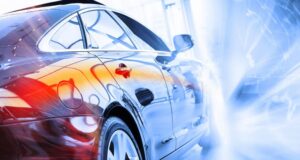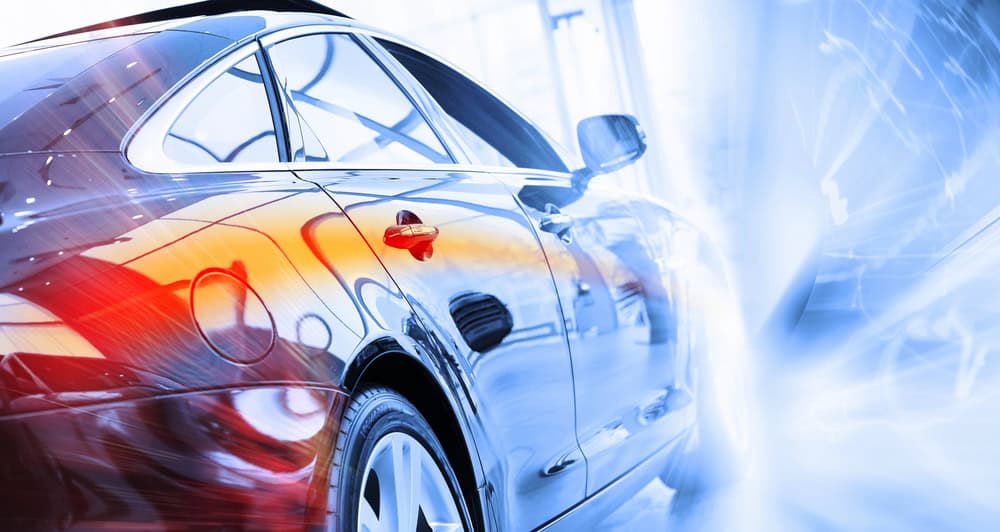
Tomorrow’s automotive leaders will be those who embrace model-based systems engineering (MBSE) today, not just to build better vehicles but to drive a fundamental transformation toward a more agile, efficient, and innovative industry.
Imagine building a LEGO model where every piece must fit perfectly to create a masterpiece. Now, imagine if each piece was designed by a different team, with no communication until the model was nearly complete. That’s what traditional vehicle design often resembles—fragmented, inefficient, and prone to costly mistakes.
By 2029, over 90% of vehicles will be software-defined, fueling a $3.5 trillion digital services market by 2040. This transformation is being accelerated by trends like the growing adoption of electric vehicles; nearly 57% of drivers are expected to go electric within the next decade. Meanwhile, autonomous driving systems are adding new layers of complexity, with over a billion lines of code powering these platforms. Despite this rapid evolution, many automakers still rely on outdated development methods that are increasingly unable to meet the demands of modern vehicle software.
Limits of traditional development
Historically, vehicle design has been dominated by mechanical engineering, with software and electronics added later in disconnected workflows. This siloed approach leads to misaligned requirements, late-stage integration issues, and costly fixes. Accenture research shows that 70% of design defects emerge in the final stages, and addressing them in production can be 800 times more expensive than catching them earlier. Meanwhile, automakers must navigate over 450 new safety regulations introduced since 2019, alongside growing demands for sustainability and software-driven capabilities.
See also: Driving Toward Industry 5.0: An Automotive Manufacturing Perspective
Why MBSE is a game-changer
Model-Based Systems Engineering (MBSE) offers a solution. MBSE replaces fragmented workflows with a unified digital blueprint that acts as a single source of truth for vehicle development. Imagine it as a LEGO instruction manual for the entire vehicle, ensuring every piece fits together seamlessly. For example, mechanical engineers, software developers, and electrical designers can collaborate in real time using this model. This integration enables teams to identify potential issues early and make adjustments before physical prototypes are built.
Another example is that of a luxury vehicle manufacturer that transitioned to MBSE by integrating model-driven processes into their R&D workflows. By replacing static requirement documents with digital models and deploying a structured model consistency framework, they streamlined compliance and cross-team collaboration, leading to significant time and cost savings.
By leveraging MBSE, companies can cut prototyping costs by 50%, accelerate time-to-market by up to 30%, and reduce overall development expenses by 10-20%. MBSE also promotes component reuse, so teams don’t have to start from scratch every time, reducing redundancy and enhancing efficiency. This adaptability is critical in today’s fast-moving market.
Overcoming the industry’s MBSE struggles
Despite its benefits, MBSE adoption remains challenging. Many automotive OEMs and suppliers still struggle with its implementation due to entrenched silos, legacy development processes, and fragmented tool ecosystems. These barriers contribute to inefficiencies, making it difficult to establish a seamless, model-driven workflow. Three key issues continue to hinder progress:
- Organizational silos: Legacy structures keep mechanical, electrical, and software teams working in isolation. This misalignment results in late-stage integration issues and inefficiencies. Cross-domain digital threads and unified SysML 2.0-based toolchains can facilitate real-time collaboration and traceability.
- Document-centric processes: Many companies still rely on static documents rather than model-based repositories, making requirement tracking and compliance management difficult. Transitioning to AI-powered, model-based repositories enables structured, linked engineering artifacts throughout the development lifecycle.
- Lack of MBSE expertise: Even well-funded MBSE tool investments often underdeliver due to skills shortages and fragmented adoption. Investing in training programs, AI-driven copilots, and integrating MBSE with broader PLM and simulation ecosystems can accelerate value realization and foster sustainable implementation.
Three must-haves for MBSE
- A common language: Systems Modeling Language (SysML) provides a structured framework for integrating mechanical, software, and electrical domains. The much-anticipated release of SysML 2.0 will further improve usability, driving wider adoption and more effective collaboration.
- AI and automation: As vehicles rely increasingly on software updates, a Software Update Management System (SUMS) is crucial. MBSE frameworks streamline updates and ensure compliance with safety standards like ISO 26262. AI-driven automation further enhances MBSE by reducing manual workload, improving traceability, and accelerating design iterations.
- Cultural transformation: MBSE is not just about tools; it requires a shift in mindset. Organizations must break down silos, enable cross-functional teamwork, and invest in training. Digital twins, which create virtual replicas of vehicle systems, can also help teams validate designs before physical implementation.
Building the vehicles of tomorrow
The shift to software-defined vehicles is inevitable, and MBSE provides a structured, scalable approach to managing this complexity. Yet, many organizations are still in the early stages of adoption, grappling with the transition from legacy processes to integrated, model-driven development.
For MBSE to become the industry standard, companies must prioritize:
- Breaking down organizational silos with cross-functional collaboration frameworks.
- Shifting from document-heavy processes to AI-powered, model-based workflows.
- Upskilling teams to maximize MBSE tool effectiveness.
The challenges are considerable, but the rewards are far greater. Tomorrow’s automotive leaders will be those who embrace MBSE today, not just to build better vehicles but to drive a fundamental transformation toward a more agile, efficient, and innovative industry. As vehicles become increasingly software-defined and complex with the integration of driver assistance technologies and alternative energy systems, MBSE provides the structured, AI-powered framework needed to accelerate innovation while ensuring seamless integration with ever-evolving technologies. This is not just about engineering superior vehicles; it’s about shaping a more sustainable and future-ready automotive ecosystem.

